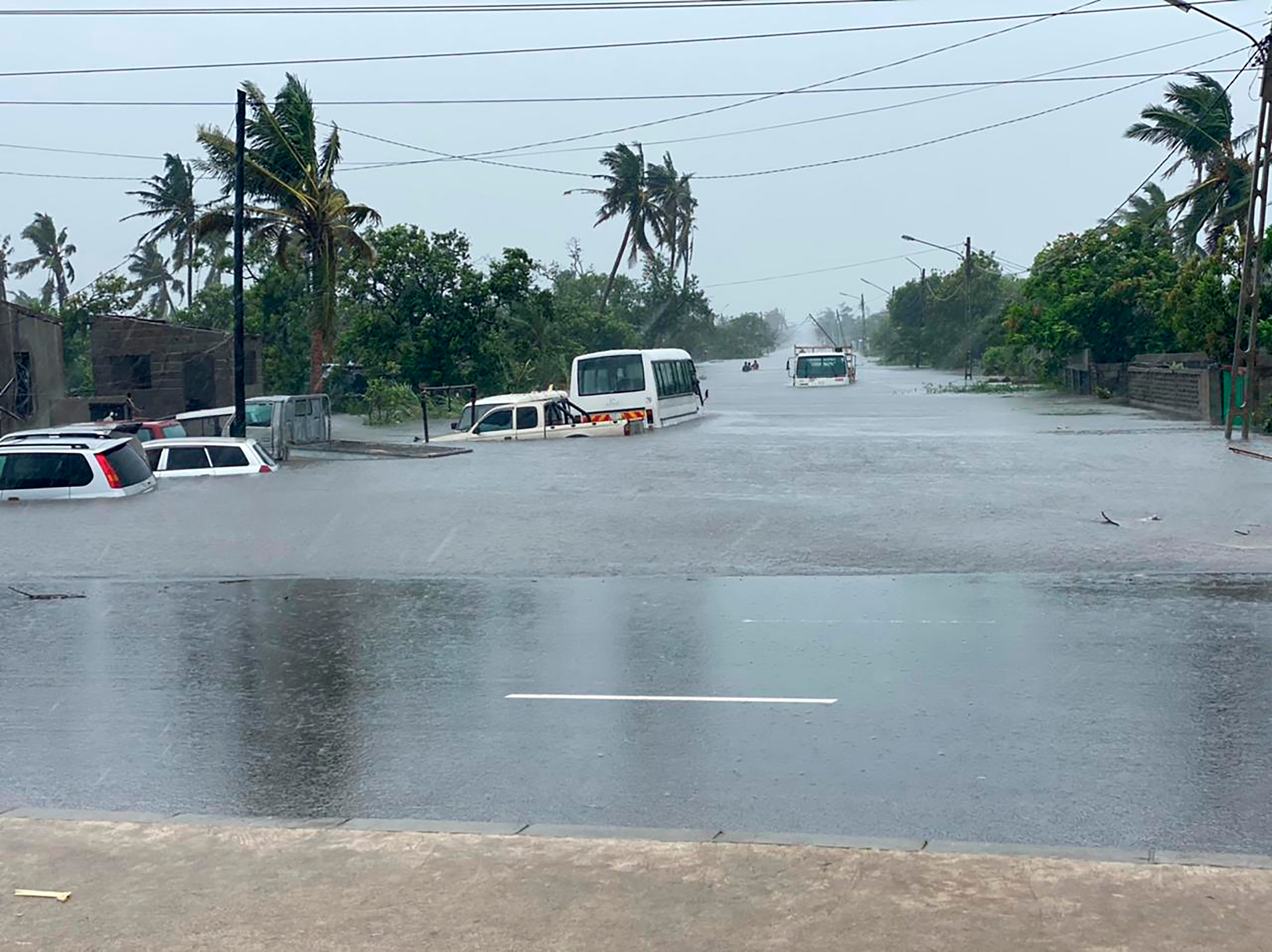Cyclone weakens in central Mozambique, but flooding a threat
The Mozambican port city of Beira breathed a sigh of relief Saturday as Cyclone Eloise caused less damage than feared as it passed through, but the danger of flooding remained in a region still recovering from a devastating cyclone two years ago

Your support helps us to tell the story
From reproductive rights to climate change to Big Tech, The Independent is on the ground when the story is developing. Whether it's investigating the financials of Elon Musk's pro-Trump PAC or producing our latest documentary, 'The A Word', which shines a light on the American women fighting for reproductive rights, we know how important it is to parse out the facts from the messaging.
At such a critical moment in US history, we need reporters on the ground. Your donation allows us to keep sending journalists to speak to both sides of the story.
The Independent is trusted by Americans across the entire political spectrum. And unlike many other quality news outlets, we choose not to lock Americans out of our reporting and analysis with paywalls. We believe quality journalism should be available to everyone, paid for by those who can afford it.
Your support makes all the difference.The Mozambican port city of Beira breathed a sigh of relief Saturday as Cyclone Eloise caused less damage than feared as it passed through, but the danger of flooding remained in a region still recovering from a devastating cyclone two years ago.
“We all feel it’s been much less than what we expected,” said Kobus Botha, head of farming and logistics company Servir. “If you remember in (Cyclone) Idai we all said ‘That’s not too bad,’ but 24 hours later the big waters came." Idai in 2019 killed several hundred people and displaced well over 100,000.
Ahead of the cyclone s arrival, the International Federation of Red Cross and Red Crescent Societies warned that at least 100,000 people will be affected.
“Heavy rainfall will persist for over 24 hours," it said. "The amount of rain will be sufficient to flood low areas of Beira and Buzi. Further flooding may arrive some days later as accumulated water flows down the Pungue and Buzi Rivers from Zimbabwe.”
In a more likely scenario, the IFRC expects 400,000 people to be affected as “torrential rains immediately flood low areas of Beira, Buzi, Nhamatanda, Chibabava and Sussundenga. Accumulation of water in Zimbabwe will flow downstream, enlarging the flooded areas for several days.”
The eye of the storm passed over Beira before dawn on Saturday, having already brought heavy rains to Zambezia province and its capital, Quelimane. The cyclone lost force after making landfall but took out electricity and communications infrastructure in Beira, a city of roughly a half-million people, and surrounding areas.
“The Vodacom network registered a temporary interruption … cutting off communication for users in the whole of the city of Beira and in certain districts of the province of Sofala,” Vodacom said in a statement.
Electric company EDM said it had turned off power as a precautionary measure after water got into a substation in Beira, local outlet Carta de Mocambique reported.
“Looking from here in the distance you can see all around roof-sheets missing here and there,” Beira resident Ben Van Wyk said. “But the mayor (Daviz Simango) has been a master of preparation. The whole of Beira put sandbags on their roofs yesterday,” as municipal authorities turned a blind eye to taking sand from the beach.
Eloise is the second cyclone to hit central Mozambique this season, after Chalane in December. But since Idai, “people now know what a cyclone is and they take it seriously," Van Wyk said.